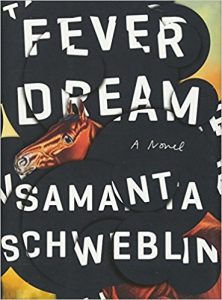



Something in the water perhaps, in the fields. The children are “strange,” “deformed,” and “their skin is pink, very pink, and scaly too.” We begin to understand, rather than know, that there is some connection between these “worms” and Amanda’s sick state. It quickly becomes evident that the town in which Amanda and her young daughter, Nina, are vacationing has been pervaded by something nightmarish. Questions bubble in the reader’s mind: how did this situation come about, what are the worms, what exactly is going on? David, the child, is interrogating Amanda, pushing her to recall the events of the last few days in order to “find the exact moment when the worms came into being,” steering her focus with his monotonous retorts of “That’s not important” or “That doesn’t matter.” Schweblin maintains a deft control of time as we shift back and forth through Amanda’s recent memories, searching for that moment-sometimes even within the space of a paragraph. There is a struggle for narrative control between these two characters. A woman lies in the dark, suffering from some kind of illness, talking to a child who we quickly learn is not her own-and who is also sick. The novel consists of a single, long conversation between two characters. Schweblin’s narrative-and her storytelling-are so gripping that I read Fever Dream in one sitting. Granta named Schweblin one of the “Best Young Spanish-Language Novelists,” and the originality of this novel makes it easy to see why. Though Samanta Schweblin has previously published three short story collections, Fever Dream is her first novel-and her English-language debut.


 0 kommentar(er)
0 kommentar(er)
